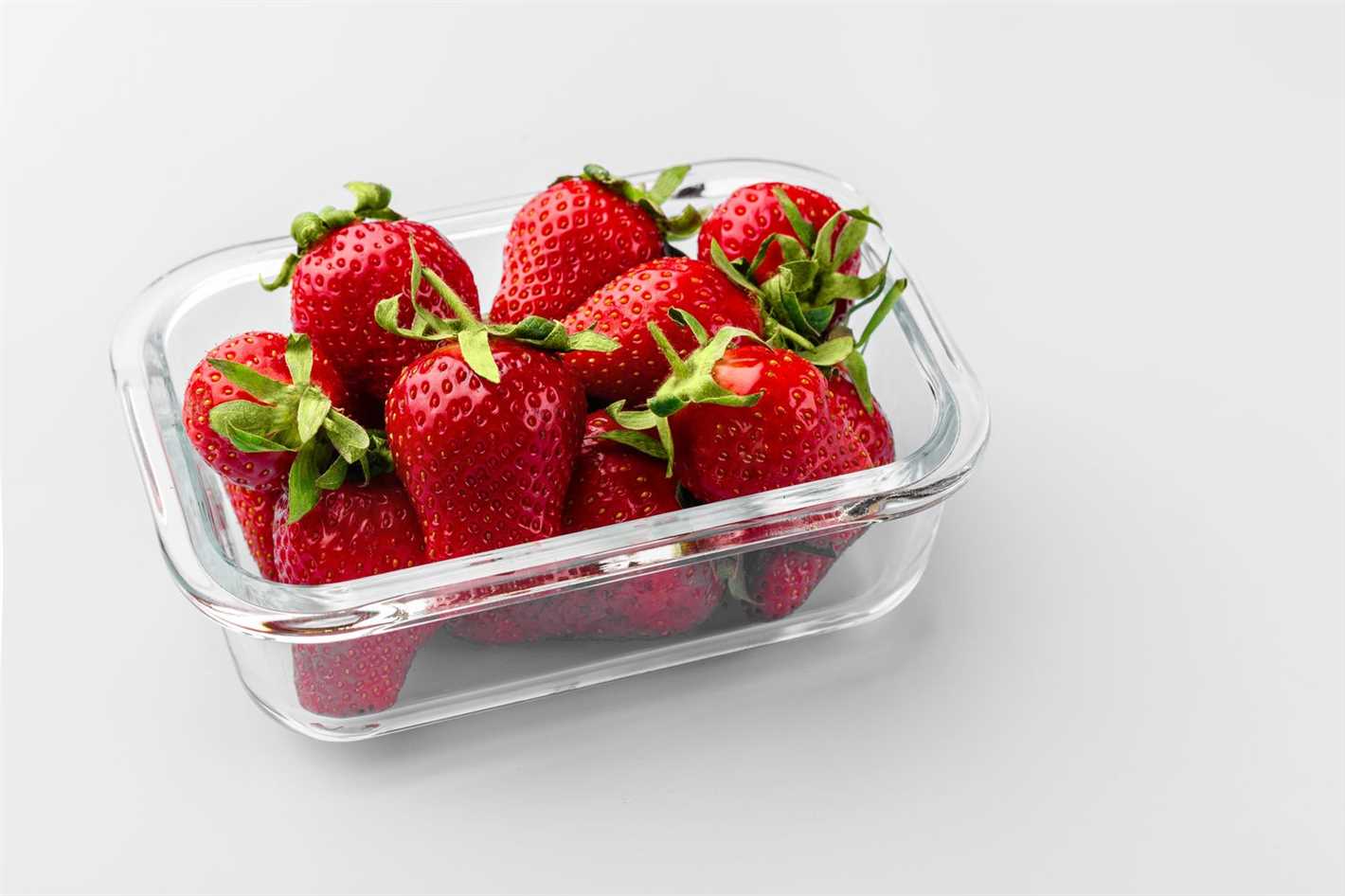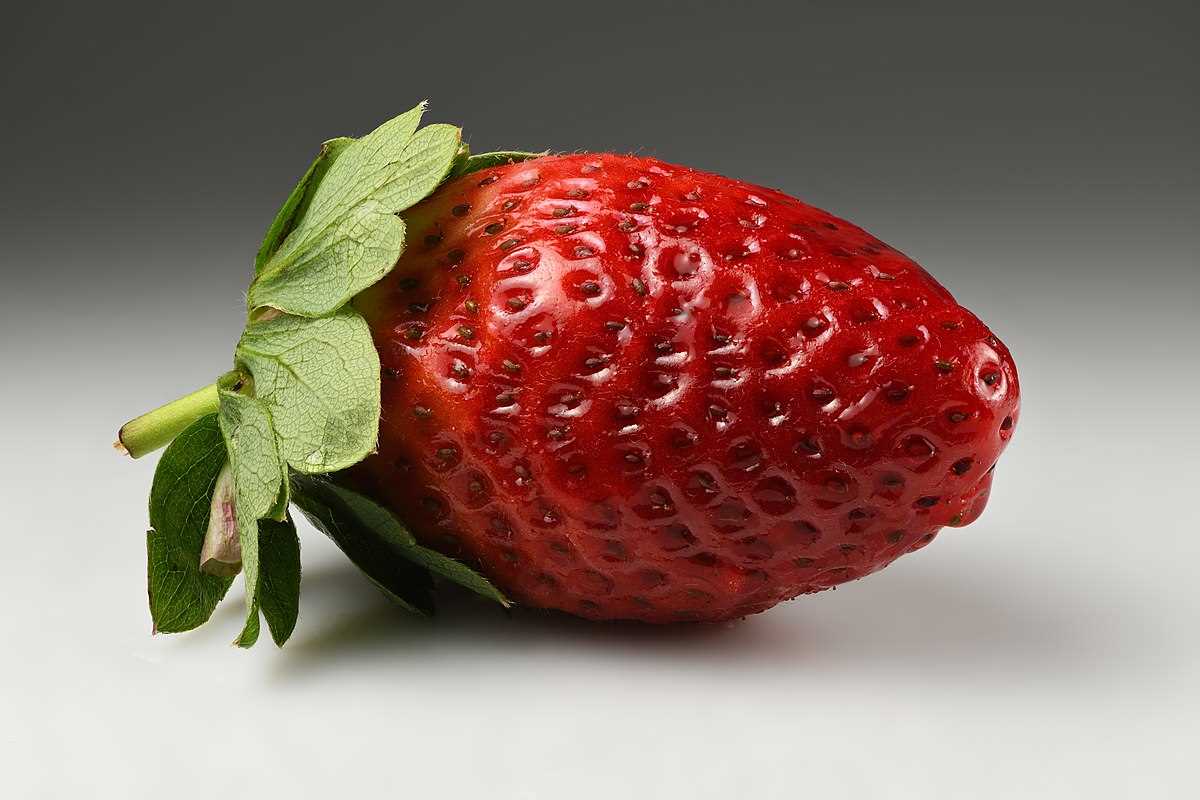- Prepare the Strawberry Patch
- 1. Choose the Right Location
- 2. Clear the Area
- 3. Test the Soil
- 4. Amend the Soil
- 5. Install a Weed Barrier
- 6. Plan for Irrigation
- Choose the Right Location
- Transplant the Strawberries
- Step 1: Prepare the Plants
- Step 2: Dig up the Plants
- Step 3: Transplant the Strawberries
- Step 4: Provide Care
- Prepare the New Bed
- Select a Suitable Location
- Clear the Area
- Test and Amend the Soil
- Prepare the Planting Holes
- Set Up Irrigation
- Add Mulch
- Label the Plants
- Plant the Strawberries
- Water and Mulch
- Provide Proper Care
- Enjoy Your Fresh Strawberries
- Question-answer:
- Can I move my strawberry patch in the winter?
- How do I prepare the new location for my strawberry patch?
- Can I move my strawberry plants any time of the year?
- Can I divide my strawberry plants when moving them?
- Is it necessary to water the strawberry plants after moving them?
- How long does it take for strawberry plants to establish after moving?
- Video: Easily Transplanting/Moving & Fertilizing Strawberry Plants Late Fall: Just Dig Them Up & Move Them
Relocating a strawberry patch can be a daunting task if not done properly. Strawberries are delicate plants that require specific conditions to thrive, and any mishandling during the relocation process can result in loss of plants or reduced productivity. However, with careful planning and execution, it is possible to safely relocate a strawberry patch and ensure the continued growth and yield of your plants.
The first step in safely relocating a strawberry patch is to choose the right time. Spring or early summer, before the plants start producing fruit, is the best time to move them. This allows the plants to establish themselves in the new location before the stress of fruit production. Ideally, choose a cloudy day or wait until late in the day to minimize the shock to the plants.
Before moving the strawberry plants, prepare the new location by clearing away any weeds or grass and loosening the soil. Strawberries prefer well-drained soil, so make sure the new site has adequate drainage. It’s also a good idea to add organic matter, such as compost or well-rotted manure, to the soil to improve its fertility.
When it’s time to move the strawberry plants, start by gently digging around the plants with a garden fork, taking care not to damage the roots. Lift the plants along with their root systems, trying to keep as much soil as possible intact. Place the plants in a bucket or container filled with water to keep the roots moist during transportation.
Once you have reached the new site, dig holes large enough to accommodate the strawberry plants, taking care not to plant them too deep. Place the plants in the holes, making sure that the crown (where the stems emerge from the roots) is level with the soil surface. Fill in the holes with soil, firming it gently around the plants. Water the newly transplanted strawberries thoroughly to help settle the soil and eliminate air pockets.
After the strawberries have been relocated, it’s important to provide them with the right care to ensure successful establishment. Keep the plants well-watered during the first few weeks, especially if the weather is dry. Mulching around the plants with straw or shredded leaves can help conserve moisture and suppress weeds. Regularly monitor the plants for pests or diseases and take appropriate measures to control them.
By following these steps, you can safely relocate a strawberry patch and give your plants the best chance of thriving in their new location. With proper care and attention, you’ll be enjoying a bountiful harvest of delicious, homegrown strawberries in no time!
Prepare the Strawberry Patch
Before relocating your strawberry patch, it is important to properly prepare the area to ensure the health and vitality of the plants.
1. Choose the Right Location
Find a new location for your strawberry patch that receives at least 6 hours of direct sunlight each day. The location should have well-drained soil to prevent waterlogging, which can lead to root rot. Additionally, choose an area with good air circulation to reduce the risk of fungal diseases.
2. Clear the Area
Remove any weeds, grass, or debris from the new location. These can compete with the strawberries for nutrients and water. Use a garden rake or shovel to thoroughly clear the area and create a clean planting bed.
3. Test the Soil
Test the soil in the new location to ensure it has the right pH level and nutrient content for optimal strawberry growth. Strawberries prefer slightly acidic soil with a pH level between 5.5 and 6.8. You can use a soil testing kit or send a soil sample to a local agricultural extension office for analysis.
4. Amend the Soil
Based on the results of the soil test, add any necessary amendments to improve the soil quality. This may include adding organic matter like compost or well-rotted manure to increase nutrient levels and improve soil structure. Mix the amendments into the top 6 to 8 inches of soil using a garden fork or tiller.
5. Install a Weed Barrier
To prevent weed growth and maintain a clean strawberry patch, consider installing a weed barrier. This can be a layer of landscape fabric or mulch placed on the soil surface. Cut holes or slits in the barrier to allow space for the strawberry plants to grow.
6. Plan for Irrigation
Ensure that your new strawberry patch has a reliable source of irrigation. Strawberries require consistent moisture, especially during fruiting. Consider installing a drip irrigation system or preparing an area for hand watering.
By properly preparing the strawberry patch, you can ensure a successful and healthy relocation of your strawberry plants.
Choose the Right Location
When relocating a strawberry patch, it is important to choose the right location to ensure the plants’ health and productivity. Here are some factors to consider when selecting a new spot for your strawberry plants:
- Sunlight: Strawberries require at least 6-8 hours of direct sunlight every day. Choose a location that receives ample sunlight throughout the day.
- Soil Quality: Strawberries prefer well-drained soil with a pH level between 5.5 and 7. If your soil is heavy clay or sandy, consider amending it with organic matter to improve its texture and fertility.
- Water Drainage: Avoid areas with poor drainage, as sitting water can lead to root rot and diseases. Ensure that the new location has good water drainage to prevent waterlogging.
- Proximity to Trees: Planting strawberries too close to trees can result in competition for nutrients and water. Choose a location that is at least 3 feet away from trees or other plants that have deep root systems.
- Accessibiliaty: Consider the accessibility of the location. Ensure that it is easy to reach for regular maintenance and harvesting. Also, if you plan to install protective netting or covers, make sure there is enough space to accommodate them.
By taking these factors into account, you can choose a location that provides the ideal growing conditions for your strawberry patch.
Transplant the Strawberries
Once you have prepared the new location for your strawberry patch, it’s time to start transplanting the strawberries. Follow the steps below to ensure a successful relocation:
Step 1: Prepare the Plants
- Water the strawberry plants thoroughly a day or two before transplanting.
- Trim any damaged or dead leaves and runners from the plants.
- If the plants have a lot of foliage, consider thinning them out to promote stronger growth after transplantation.
Step 2: Dig up the Plants
Using a garden fork or shovel, carefully dig around each strawberry plant, making sure to dig deep enough to avoid damaging the roots.
- Start digging about 6 inches away from the base of the plant to create a wide root ball.
- Gently lift the strawberry plant from the ground, taking care not to shake off too much soil.
- If the plant has multiple crowns, you can separate them into separate plants before transplanting.
Step 3: Transplant the Strawberries

Place the strawberry plants in the prepared holes in the new location, making sure to space them adequately to allow for growth.
- Set the plants at the same depth they were growing in the previous location, ensuring that the roots are fully covered with soil.
- Water the transplanted strawberries immediately after planting to help them settle in their new environment.
Step 4: Provide Care
To ensure the successful establishment of the transplanted strawberries, it’s important to provide proper care:
- Water the strawberries regularly, keeping the soil evenly moist but not waterlogged.
- Mulch around the plants to conserve moisture, suppress weeds, and maintain a stable soil temperature.
- Monitor the plants for any signs of pests or diseases and take appropriate action if necessary.
- Fertilize the strawberry plants according to the recommended schedule to provide them with necessary nutrients.
By following these steps and providing proper care, your transplanted strawberry patch should thrive in its new location.
Prepare the New Bed
After successfully uprooting the strawberry patch, it’s time to prepare the new bed where you will be relocating the plants. Follow these steps to ensure a healthy and thriving strawberry patch in its new location:
Select a Suitable Location
Choose a location that receives at least six hours of direct sunlight per day. This will help the strawberry plants produce abundant fruit.
Clear the Area

Remove any weeds, rocks, or debris from the new bed. These can interfere with the growth of the strawberry plants and also provide a hiding place for pests.
Test and Amend the Soil
It’s crucial to have well-draining soil for strawberries. Test the soil pH and ensure it is between 5.5 and 6.5. If the pH is too high, add sulfur to lower it, and if it’s too low, add lime to raise it. Additionally, add organic matter such as compost or aged manure to enrich the soil and improve its fertility.
Prepare the Planting Holes

Space the planting holes about 12 to 18 inches apart, with rows spaced 3 to 4 feet apart. Dig holes that are wide and deep enough to accommodate the roots of the strawberry plants.
Set Up Irrigation
Install an appropriate irrigation system to ensure the strawberry plants receive adequate water. Drip irrigation or soaker hoses are ideal as they deliver water directly to the roots while minimizing evaporation.
Add Mulch
Apply a layer of straw or mulch around the strawberry plants to help retain moisture, suppress weed growth, and provide insulation. Leave a small space around the base of each plant to prevent rot.
Label the Plants
Use plant markers or labels to keep track of the different strawberry varieties and their locations in the bed. This will help you identify and care for each plant accordingly.
By preparing the new bed properly, you are setting the stage for a successful relocation of your strawberry patch. Following these steps will ensure that the plants adapt well to their new environment and continue to thrive, providing you with delicious strawberries for years to come.
Plant the Strawberries
After preparing the new strawberry bed, it is time to plant the strawberries. Follow these steps to ensure a successful planting:
- Remove any weeds or debris from the planting area.
- Prepare the soil by loosening it with a garden fork or tiller. This will help improve drainage and create a loose planting bed.
- Amend the soil with organic matter, such as compost or well-rotted manure, to improve fertility.
- Measure and mark out the spacing for the strawberry plants. Generally, plants should be spaced about 12 to 18 inches apart in rows that are 2 to 3 feet apart.
- Dig a hole for each strawberry plant that is deep enough to accommodate the roots without bending or crowding them.
- Place a strawberry plant in each hole, making sure the crown (where the foliage meets the roots) is level with or slightly above the soil surface.
- Fill in the hole with soil, gently firming it around the roots to remove any air pockets.
- Water the newly planted strawberries thoroughly to settle the soil around the roots.
- Apply a layer of mulch, such as straw or wood chips, around the plants to help retain moisture and suppress weeds.
Proper planting is crucial for the health and productivity of your strawberry patch. Take your time and ensure each plant is planted correctly and given the necessary care to thrive.
“`html
Water and Mulch
Watering is an important step in relocating a strawberry patch. Before digging up the plants, make sure to give them a thorough watering to help reduce stress and aid in the transplanting process.
Once the strawberry plants are relocated, it is essential to continue watering them regularly. Strawberries prefer moist soil, so be sure to water them enough to keep the soil evenly moist. However, be careful not to overwater, as this can lead to root rot.
In addition to watering, mulching is another crucial step in retaining moisture and promoting plant health. Apply a layer of organic mulch such as straw, wood chips, or pine needles around the plants.
Mulching serves several purposes:
- It helps to retain moisture in the soil, reducing the need for frequent watering.
- It suppresses weed growth, preventing competition for nutrients and water.
- It insulates the roots, protecting them from extreme temperature fluctuations.
- It keeps the strawberries clean by preventing soil splashing onto the fruits and leaves.
To mulch the strawberry patch, spread a layer of mulch about 2-4 inches thick around the plants, taking care to avoid direct contact with the crowns. Leave a small gap around each plant to prevent moisture-related diseases.
| Mulching Material | Pros | Cons |
|---|---|---|
| Straw | Retains moisture well, provides good insulation | Can attract pests such as slugs |
| Wood chips | Long-lasting, suppresses weeds effectively | May deplete nitrogen from the soil as it breaks down |
| Pine needles | Acidic pH suits strawberries, lightweight | May blow away in windy areas |
“`
Provide Proper Care
After successfully relocating your strawberry patch, it’s important to provide proper care to ensure the plants successfully adapt to their new location. Here are some tips to help you with the process:
- Watering: Water the plants immediately after transplanting to help them settle in their new location. Be sure to provide enough water to keep the soil moist, but avoid overwatering, as it can lead to root rot. Water the plants regularly, especially during dry periods, to ensure they receive adequate moisture.
- Mulching: Mulch the strawberry patch to help conserve moisture, suppress weed growth, and regulate soil temperature. Apply a layer of organic mulch, such as straw or wood chips, around the plants, taking care not to cover the crown of the plant. This will also help prevent direct contact between the fruit and the soil, reducing the risk of rotting.
- Fertilizing: Fertilize the strawberry plants regularly to provide them with the necessary nutrients for healthy growth and fruit production. Use a balanced fertilizer specifically formulated for strawberries and follow the package instructions for application rates. Apply the fertilizer around the plants, taking care not to get it on the leaves or crowns.
- Pruning: Prune the strawberry plants to remove any dead or damaged leaves, as well as runners that are not needed for propagation. This will help improve air circulation and prevent the spread of diseases. Pruning also encourages the plants to focus their energy on producing larger and healthier fruits.
- Pest and Disease Control: Monitor the strawberry plants regularly for signs of pests or diseases. Common pests that affect strawberries include aphids, slugs, and snails. If you notice any signs of infestation, take appropriate measures to control the pests. Similarly, look out for diseases like powdery mildew or botrytis, and treat them promptly to prevent them from spreading to other plants.
By providing proper care, you can help your relocated strawberry patch thrive in its new location and continue to produce delicious fruits for years to come.
Enjoy Your Fresh Strawberries

After safely relocating your strawberry patch, you can look forward to enjoying the delicious fruits of your labor. Here are some tips on how to make the most of your fresh strawberries:
- Harvest at the right time: Wait for the strawberries to fully ripen before picking them. Look for berries that are bright red and have a sweet aroma. This will ensure that the strawberries are at their peak flavor.
- Handle with care: When harvesting your strawberries, be gentle to avoid bruising or damaging the fruit. Use a small pair of garden shears or a sharp knife to cut the stem just above the berry. This will help preserve the quality of the strawberries.
- Wash before eating: Before consuming your strawberries, give them a quick rinse under cool water. This will remove any dirt or debris that may be on the surface of the berries. Pat them dry with a paper towel or let them air dry before eating.
- Store properly: If you have an abundance of strawberries, you can store them in the refrigerator to extend their shelf life. Place the strawberries in a single layer in a container lined with paper towels to absorb excess moisture. They should last for a few days when stored this way.
- Enjoy them fresh: The best way to enjoy your strawberries is to eat them fresh. Their natural sweetness and juiciness make them a delicious snack on their own. You can also add them to salads, smoothies, or use them as a topping for desserts like cakes, pies, and ice cream.
By following these tips, you can savor the taste of your freshly picked strawberries and make the most out of your harvest. Enjoy!
Question-answer:
Can I move my strawberry patch in the winter?
It is not recommended to move your strawberry patch in the winter. Strawberries are dormant during winter and moving them during this time can cause stress and damage to the plants. It is best to wait until spring or fall when the plants are actively growing.
How do I prepare the new location for my strawberry patch?
To prepare the new location for your strawberry patch, start by clearing the area of any weeds or grass. Loosen the soil to improve drainage and add organic matter, such as compost or aged manure, to enrich the soil. Ensure that the new location receives full sun and has good air circulation.
Can I move my strawberry plants any time of the year?
While it is possible to move strawberry plants at any time of the year, the best time to do so is in spring or fall when the plants are dormant or are actively growing. This gives the plants a chance to establish their roots in their new location before the stress of fruit production in the summer.
Can I divide my strawberry plants when moving them?
Yes, you can divide your strawberry plants when moving them. Dividing the plants can help rejuvenate them and promote healthier growth. Simply dig up the clumps of strawberry plants and carefully separate them into smaller sections, ensuring that each section has a good set of roots and leaves.
Is it necessary to water the strawberry plants after moving them?
Yes, it is necessary to water the strawberry plants after moving them. Transplanting can cause stress to the plants, and maintaining proper moisture levels is important for their survival. Water the plants immediately after moving them and continue to water them regularly until they are established in their new location.
How long does it take for strawberry plants to establish after moving?
The time it takes for strawberry plants to establish after being moved can vary depending on various factors such as the time of year, weather conditions, and the health of the plants. In general, it can take several weeks for the plants to fully establish and resume active growth. During this time, it is important to provide them with proper care and maintenance.







